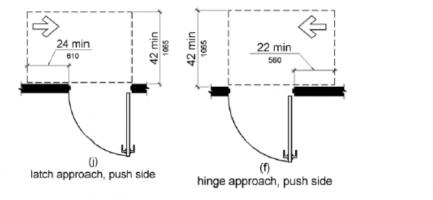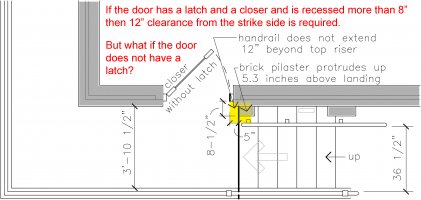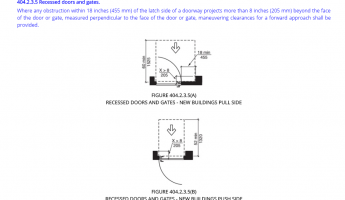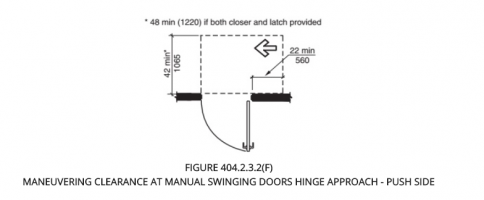BayPointArchitect
Sawhorse
Given:
Jurisdiction enforces both ANSI A117.1 and 2010 ADA
An existing push-pull door with closer. No latch. Just a double-cylinder key lock.
A small brick pilaster is located above the landing and near the strike side of the doorway.
If this door had a latch and closer, then the 12 inches would be required by the 2012 ADA.
If this opening had no door but only a 36 inch wide opening, then the 12 inches would not be required.
Question:
What dimension is required on the push and strike side of the door if there is only a closer and the door is recessed more than 8 inches?
As always, thank you!
ICC Certified Plan Reviewer
NFPA Certified Fire Plan Examiner
Jurisdiction enforces both ANSI A117.1 and 2010 ADA
An existing push-pull door with closer. No latch. Just a double-cylinder key lock.
A small brick pilaster is located above the landing and near the strike side of the doorway.
If this door had a latch and closer, then the 12 inches would be required by the 2012 ADA.
If this opening had no door but only a 36 inch wide opening, then the 12 inches would not be required.
Question:
What dimension is required on the push and strike side of the door if there is only a closer and the door is recessed more than 8 inches?
As always, thank you!
ICC Certified Plan Reviewer
NFPA Certified Fire Plan Examiner




